Attainment Explore American History Curriculum World Trouble Again
MILWAUKEE–Reddish Rodriguez remembers the days when English class meant walking to her desk-bound, talking to friends and checking the lath.
At present class begins when her classmates' names appear online. She sits alone at the dining room table, barefoot and petting the family dog. It'due south her freshman year at St. Anthony Loftier School, a private Catholic school in Milwaukee. She doesn't know what her classmates look similar, because nobody ever turns on their cameras.
After schools in Milwaukee went remote last March, Ruby and her friends in eighth form at St. Anthony'south heart school missed their graduation ceremonies and parties. Her shut friends attended dissimilar high schools, more often than not other individual schools that offered in-person educational activity. St. Anthony, similar many schools in urban areas, including Milwaukee Public Schools, started the fall semester online among the coronavirus pandemic.
Virtual learning might exist keeping Ruby, xiv, and her family safer during a public health crisis. But it has made information technology exponentially harder for her to stay motivated and learn. Her online classes are lecture-heavy, repetitive and devoid of educatee conversation. Her grades accept dropped from A's and B'due south to D'due south and F'southward. She stays up likewise belatedly. She sleeps a lot. She misses her friends.
Similar millions of students attending school virtually this twelvemonth, Ruby is floundering academically, socially and emotionally. And every bit the pandemic heaves into a winter surge, a slew of new reports show alarming numbers of kids falling behind, failing classes or non showing upward at all.
Coronavirus Chronicles: Students struggle to acquire and find comfort in online learning
Across the country, students are struggling to focus and retain data with online learning, and many feel they are learning less than past years.
Harrison Colina, USA TODAY
For months, experts hoped a render to classrooms would allow teachers to address the lapses in children's bookish and social needs. For many students, that hasn't happened.
The goalposts are constantly shifting on a return to in-person learning, and almost one-half of U.South. students are attending virtual-only schools. It's becoming increasingly clear that districts and states need to improve remote instruction and find a manner to give individual kids special assist online.
At the moment, plans to assistance students grab up are largely evolving, sparse or nonexistent.
The consequences are almost dire for low-income and minority children, who are more probable to exist learning remotely and less probable to have appropriate engineering science and habitation environments for independent written report compared with their wealthier peers. Children with disabilities and those learning English have particularly struggled in the absence of in-class instruction. Many of those students were already lagging academically before the pandemic. Now, they're fifty-fifty further behind – with time running out to come across cardinal bookish benchmarks.
In high-poverty schools, 1 in 3 teachers report their students are significantly less prepared for grade-level work this year compared with final twelvemonth, co-ordinate to a report by the RAND Corporation, a nonprofit enquiry institution. Class failure rates have skyrocketed in schoolhouse systems from Fairfax Canton, Virginia, to Greenville, Due south Carolina. Fewer kindergarteners met early literacy targets in Washington, D.C., this fall. And math achievement has dropped nationwide, according to a report that examined scores from 4.4 1000000 uncomplicated and middle school students.
"This is non going to be a problem that goes away equally soon as the pandemic is over," said Jimmy Sarakatsannis, leader of pedagogy practice at consulting firm McKinsey and Visitor. He co-wrote a report that estimated the average pupil could lose five to nine months of learning by June, with students of color losing more than that.
Beyond that, tens of thousands of children are unaccounted for altogether. Hillsborough Canton, Florida, started the twelvemonth missing more than than 7,000 students. Los Angeles saw kindergarten enrollment drop by about 6,000. There's scant data nigh missing students'progress, of course, simply few presume they're charging ahead academically.
"We virtually need a disaster plan for instruction," said Sonya Thomas, executive managing director of Nashville Propel, a community group that works with many Blackness parents in Tennessee.
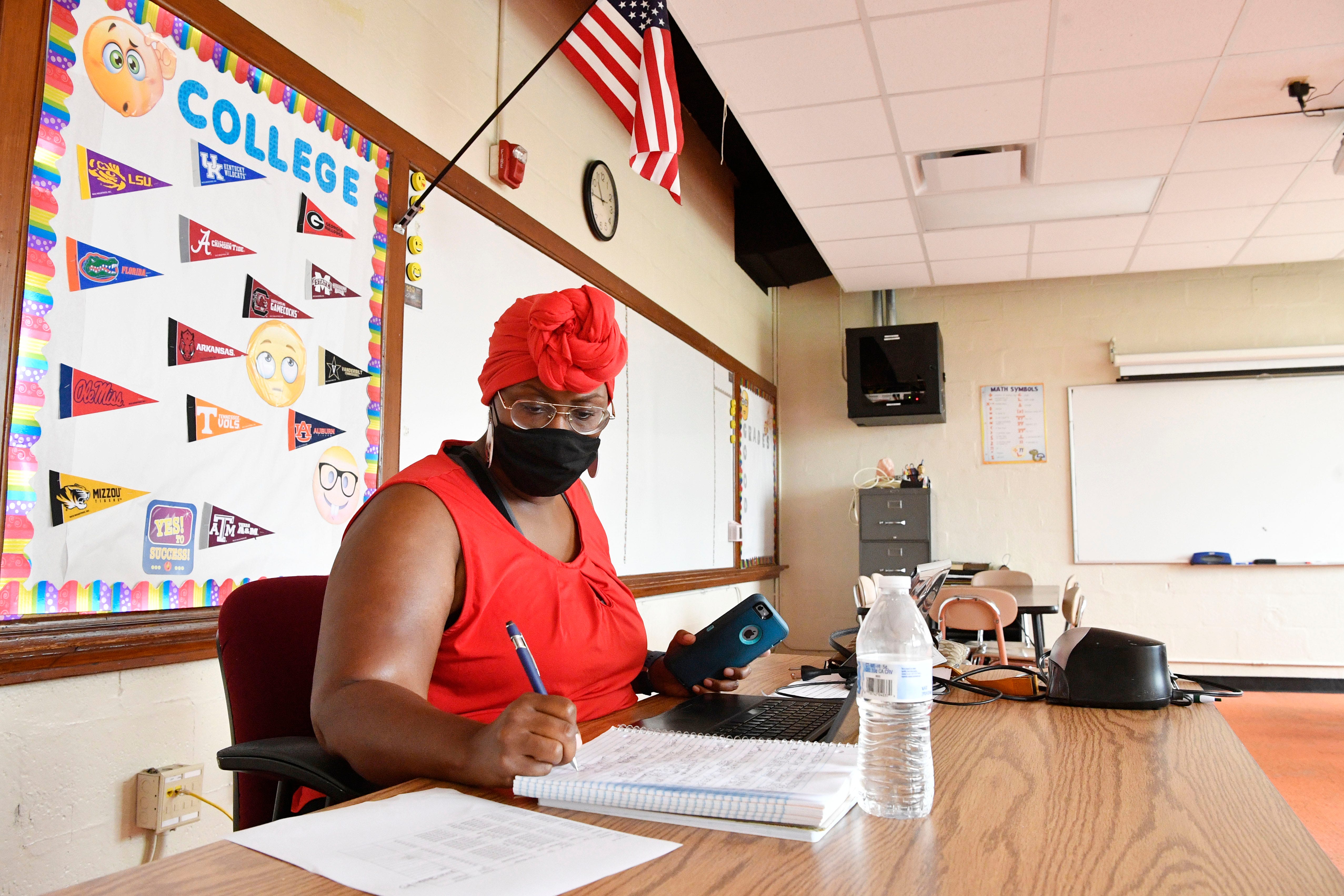
The Nashville school arrangement offered some in-person learning in Oct and November before reverting to all-virtual didactics after Thanksgiving, as COVID-xix cases surged. Some parents say their children are failing every unmarried subject, Thomas said.
Others say they still don't have digital devices or high-speed internet, or that their children'southward special-pedagogy learning plans aren't being followed. 1 father said his middle school child struggles and so much online that he walks out of the house and doesn't come back until nighttime, Thomas said.
"Our parents are afraid their kids are falling behind, and they don't know what the solution is," Thomas said. "They're looking for leadership. They're looking for help."
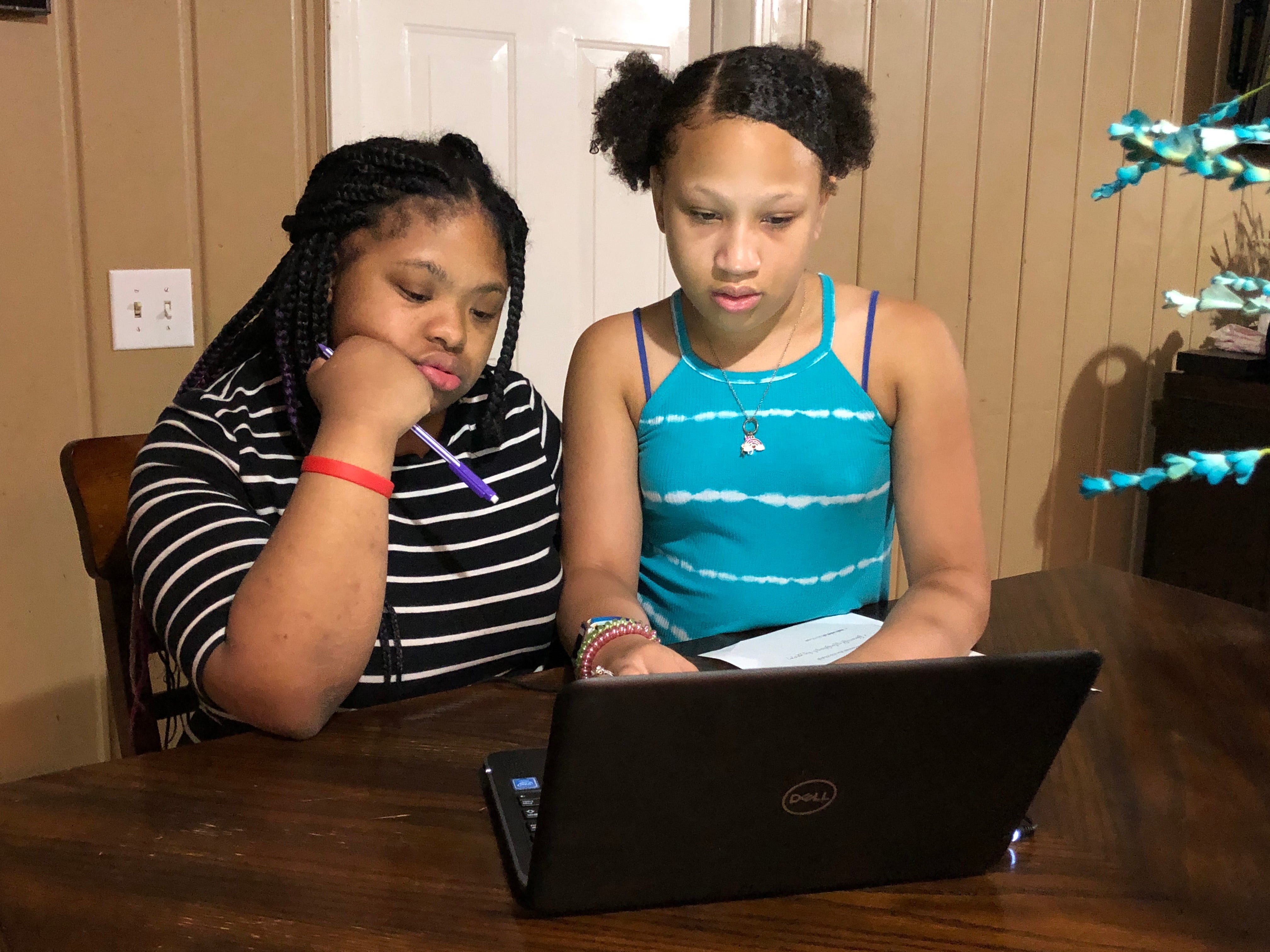
How much has learning slowed this year?
9 months later COVID-19 shuttered schools and prompted the country's largest experiment with virtual learning, the extent of academic regression is still a guessing game. And it looks unlike from educatee to student.
Johnny Murphy, 15, struggled for a calendar month this autumn to learn how to unmute himself during live video lessons with his class at Vaughn High School in Chicago. Irish potato has autism and an intellectual disability.
His mother, Barbara Murphy, knows her son likely will never read beyond a third-form level. Only he's backtracking on educational goals such as engaging with his peers and on life goals similar leaving the firm safely and using money, she said.
"It'due south been like summer break all year."
For Lily McCollum, xv, classes move more slowly online than they did in person. She'southward a sophomore at Southridge High School in Kennewick, Washington, where she has been learning remotely all year.
"We're probably the farthest backside in English and math," she said. "It'south actually difficult to stay focused, especially if I don't have my camera on."
LaTricea Adams, founder of Black Millennials iv Flintstone in Michigan, figures local children are at least a year behind in their studies, based on what she has heard from families and educators. Even before the pandemic, less than 30% of Flintstone's third-form students were proficient in English, according to the latest state test scores.
"Some of these kids really demand 1-on-one sessions, but that'south almost impossible for them to get in a virtual setting," Adams said.
Quantifying the extent of learning loss is difficult.
American students in third through eighth grade have held steady in reading but have fallen behind in math since final fall, according to a report this month by nonprofit testing organization NWEA. The group examined academic progress in reading and math for 4.4 million students at 8,000 schools, with a big caveat: The students nearly likely to be tested were those attending classes in person, or attention schools with enough resources to test their remote learners.
In other words, the study makes the land of American instruction look amend than it actually is, disproportionately reflecting the progress of students at higher-income schools who tend to score better on tests anyway.

'Kids are going feral'
A squad of researchers at Stanford University crunched NWEA examination scores for students in 17 states and the Commune of Columbia and reached a more dire decision this fall. The average student had lost a tertiary of a year to a total year's worth of learning in reading, and about three-quarters of a year to more than than a yr in math since schools closed in March, the report estimated.
"Kids are going feral," said Macke Raymond, manager of the Heart for Research on Education Outcomes at Stanford University. "Thousands of them are unaccounted for, with no contact since schools have closed."
The predictions are only estimates, and they're built on the supposition that students didn't learn much at all between March and the start of this school yr.
In any case, despite detailed findings for each schoolhouse, some leaders in participating states have all but ignored the report.
Louisiana State Superintendent Cade Brumley said the written report confirms what his section already suspected nearly learning loss. He said he has asked Louisiana school leaders to practise their own diagnostic testing, but it's not mandatory.
Brumley supports additional tutoring for students, but he'south wary of adopting flashy new programs. Teachers, he said, volition practice what they've always done to help students larn: evangelize high-quality didactics with a high-quality curriculum.
In Arizona, one of the other participating states, instruction section officials said they were not familiar with the report.
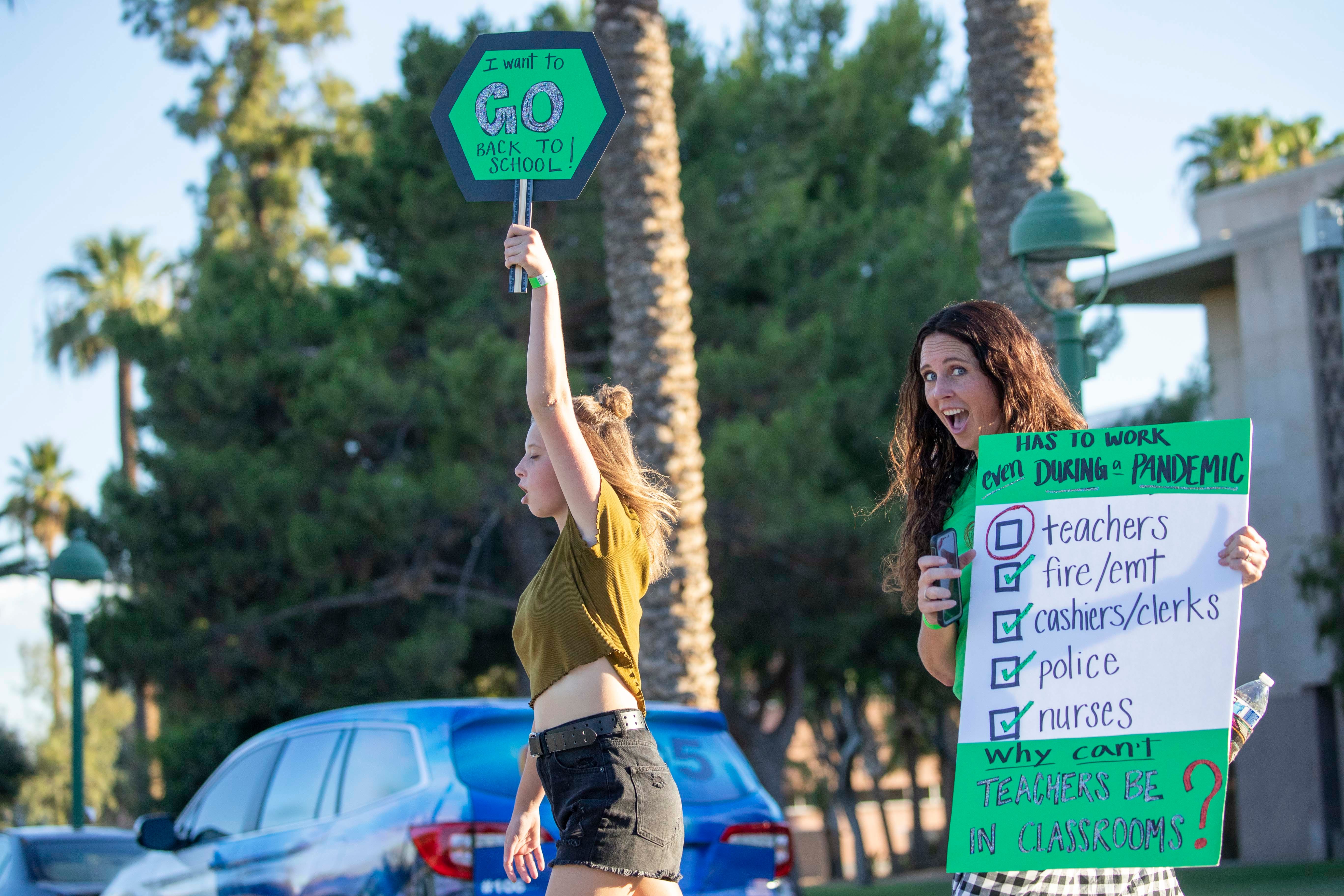
Tennessee posted the largest learning losses in reading, according to the report's estimates.
Results varied within each country. For case, students at Tennessee'southward wealthier schools didn't lose much in reading achievement, or they pulled ahead of where researchers estimated they'd be. But students at the nearly impoverished schools fell backside – way behind, co-ordinate to the estimates.
Penny Schwinn, Tennessee's commissioner of education, said her team is concerned about those estimates.
Some children are doing fine, Schwinn said. But teachers tell her that low-income students and English learners are tracking backside where they would unremarkably exist this time of yr.

Tennessee has aimed to jump-offset a recovery by creating an online parent platform with additional resources and by expanding online tutoring.
But in Memphis and Nashville, where many schools have been operating online all year, several parents said their kids need more than that to catch upward.
During a Zoom telephone call in Oct hosted past Memphis Lift, a parent advocacy grouping, merely four out of 11 parents said they had heard straight from their kid'southward teacher this year.
Now the group is pushing state lawmakers to back the idea of personalized academic recovery plans for children who are falling behind.
Dionne Howell, a parent of a 7th-grader and ninth-grader in Memphis, Tennessee, supports the thought. From March until this autumn, instruction was pretty much nonexistent, she said.
"I know my children have not progressed as much as they should have."
Boring lessons, disengaged students
Information technology's 12 minutes into Red Rodriguez' hour-long English language form, and the teacher is even so welcoming students online and urging them to complete a "exercise now." That's a quick warm-upward exercise to indicate who's nowadays and thinking.
Students have read Martin Luther Male monarch Jr.'s "I Have A Dream" speech equally well as his essay "Letter of the alphabet from Birmingham Jail." The warm-upward is to explain which they prefer.
Crimson hasn't written anything. She says shedoesn't fifty-fifty know her teacher'due south name.
"We've been working on these same things for a week," she shrugged.
The teacher coaxes the class to consider why Rex wrote each piece the way he did, what rhetorical devices he used to brand his statement. There's no student conversation. Those who do respond send their letters privately to the teacher, rather than putting them in the group chat for all to see.
The instructor uses those private responses to type out some sentences for the grade, and Ruby-red copies and pastes them into her ain document. She'll have to write an essay comparing these two literary works. At that point, she figures, it'south just a matter of weaving in her own sentences around what the teacher has written.
Carmine's parents, Lauro and Alma, are worried. Lauro, who works at a local manufacturing plant, has contacted the banana principal with his concerns. Alma, a certified nursing assistant who works 2nd shift, has a hard time helping her girl.
"This is the first time I've felt helpless," Lauro said.
Huge losses for some students, not others
Some motivated learners haven't slipped at all in this new era. Some prefer online learning. Others accept progressed by attending classes in person.
Gabriella Staykova, a senior at Paul Laurence Dunbar High School in Lexington, Kentucky, learns remotely on a four-day schedule through a magnet programme within her school. V of her 9 classes require her to engage online with her peers, and the other four are "self-guided," she said.
Virtual learning actually gives her more time to work on side projects similar Student Vocalization, a national youth-led nonprofit.
"Online education is not a big barrier to my academic success, but that's not the example for the vast majority of students," she said.
A fast internet connexion, a comfortable and quiet place to study, a stable home life and a history of high grades helped her to adapt this yr.
The digital disinterestedness gap has long been a stumbling block in American education, merely the pandemic has exacerbated the split.
In one recent study of low-income families in Los Angeles, one out of 5 parents of uncomplicated school students said their child was using a device other than a computer to access their remote studies – probable a phone, said Stephen Aguilar, the study'due south lead author and an instruction professor at the University of Southern California.
Further, 1 out of 3 families reported they never or simply sometimes had a place in the home free of distractions for a kid to learn and study. One-half of low-income parents surveyed said they rarely used a computer themselves.
"Many are not using engineering science every day, and withal we're request them to gear up a remote schoolhouse for their children," Aguilar said.
Those divides are determining how chop-chop children can resume academic progress.
In the RAND Corp. survey of teachers, their students' preparedness was heavily tied to income.
"When we button and say, 'Those students really demand to be in person,' we think about the fact that many students in high-poverty households are at higher chance for COVID-19 transmission," said Julia Kaufman, a senior policy researcher at RAND who led the study. "There'southward tension between those two things."
Remote learning can exist amend
Leaders of several Black parent advocacy groups say most of their families don't want to return to schools yet because of safety concerns. Many don't come across education going back to the fashion it was, and so they're pressuring schools to strengthen their virtual programs.
"Our Black children have long been failed by in-person learning, so we don't want a return to the status quo," said Lakisha Young, founder of The Oakland Attain, a parent advocacy group in Oakland, California.
"How would we design instruction differently now if nosotros accustomed we're not going to return to schools until adjacent autumn?" she said.
Since the school shutdowns in spring, Oakland Reach hired family liaisons to help parents navigate fiscal challenges and their children's education, Young said. It signed upward children for the National Summer School Initiative, a series of recordings taught by skilled mentor teachers, who then supported local educators working with participating children.
"Parents told us their kids were getting up in the morn and wanted to get online," Young said. "They literally wanted more summer school."
The group also created a five-week online summer literacy programme for children in kindergarten through 2d course, which increased scores past an average of two levels on the commune's reading assessment, Young said. The virtual program included small grouping lessons with teachers, recorded lessons, family literacy workshops, read-alouds of books featuring the experiences of Blackness children, and weekly community celebrations.
For younger and older learners akin, online classes can and should be restructured to focus on customs and peer-to-peer connections, said Mimi Ito, who studies youth media practices at the University of California-Irvine.
At the moment, a lot of virtual classes experience like "a 2d-rate version of what's done in a physical classroom," she said, which is why they're non very engaging.
Teachers can contain online gaming or social media into their classes, where children pursue goals or share content equally part of a team or community, Ito said. She suggested games such as Minecraft and Roblox, or video platforms like TikTok and YouTube.
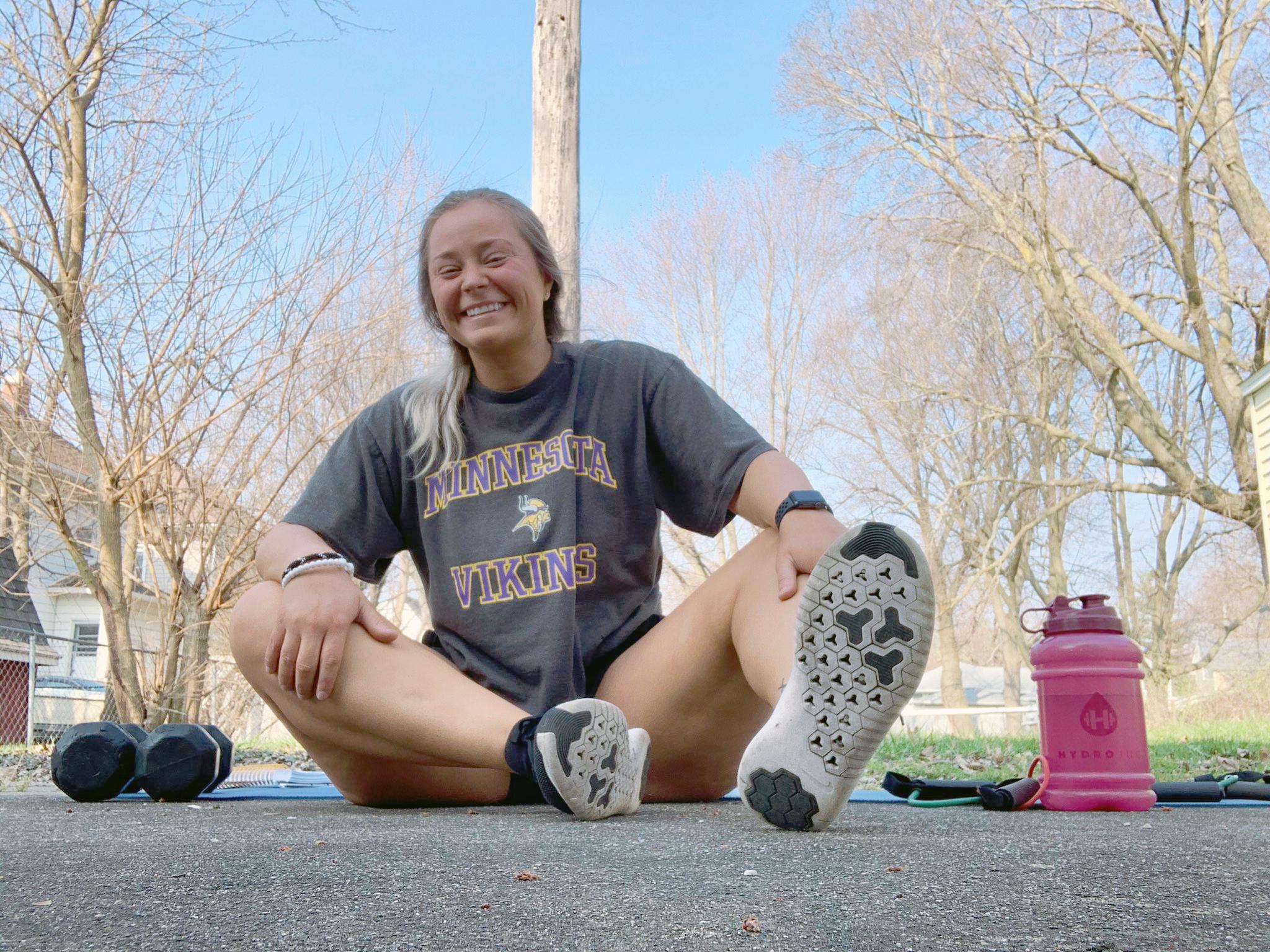
Steve Isaacs, a middle and high school gaming blueprint teacher in Basking Ridge, New Jersey, addressed science and current events this fall by having students build models of the COVID-xix virus in Minecraft.
The game also allows students to build virtual museums or libraries, where they tin can show their knowledge of English and history standards, Isaacs said.
"I try to give kids selection in their learning pathways and activities," he said. "On Zoom, I lecture less and split kids into a lot of breakout rooms, and and then I randomly pop into them."
Connections between students and teachers are easier to build when students' cameras are on, but many districts have not required that for privacy reasons.
About a dozen high schoolhouse students interviewed by USA TODAY said that even with cameras off, they felt they learned more in virtual classes that featured an active group conversation. Withal, many could non say why the chat letters flowed readily in some classes and were silent in others.
'If we can't see the trouble ...'
At John Harris High Schoolhouse in Harrisburg, Pennsylvania, teachers recently compiled the grades of all students still learning to speak and write in English. Until that point, no 1 had noticed that every English learner was failing at least 1 class. Spurred to activity, they reached out to a local nonprofit focused on immigrants and refugees, which rounded upwardly community tutors to work with students once a week. Teachers carved out extra time on Fridays for ane-on-one sessions.
A calendar month later, the percentage of English language learners failing courses had dropped to 75%.
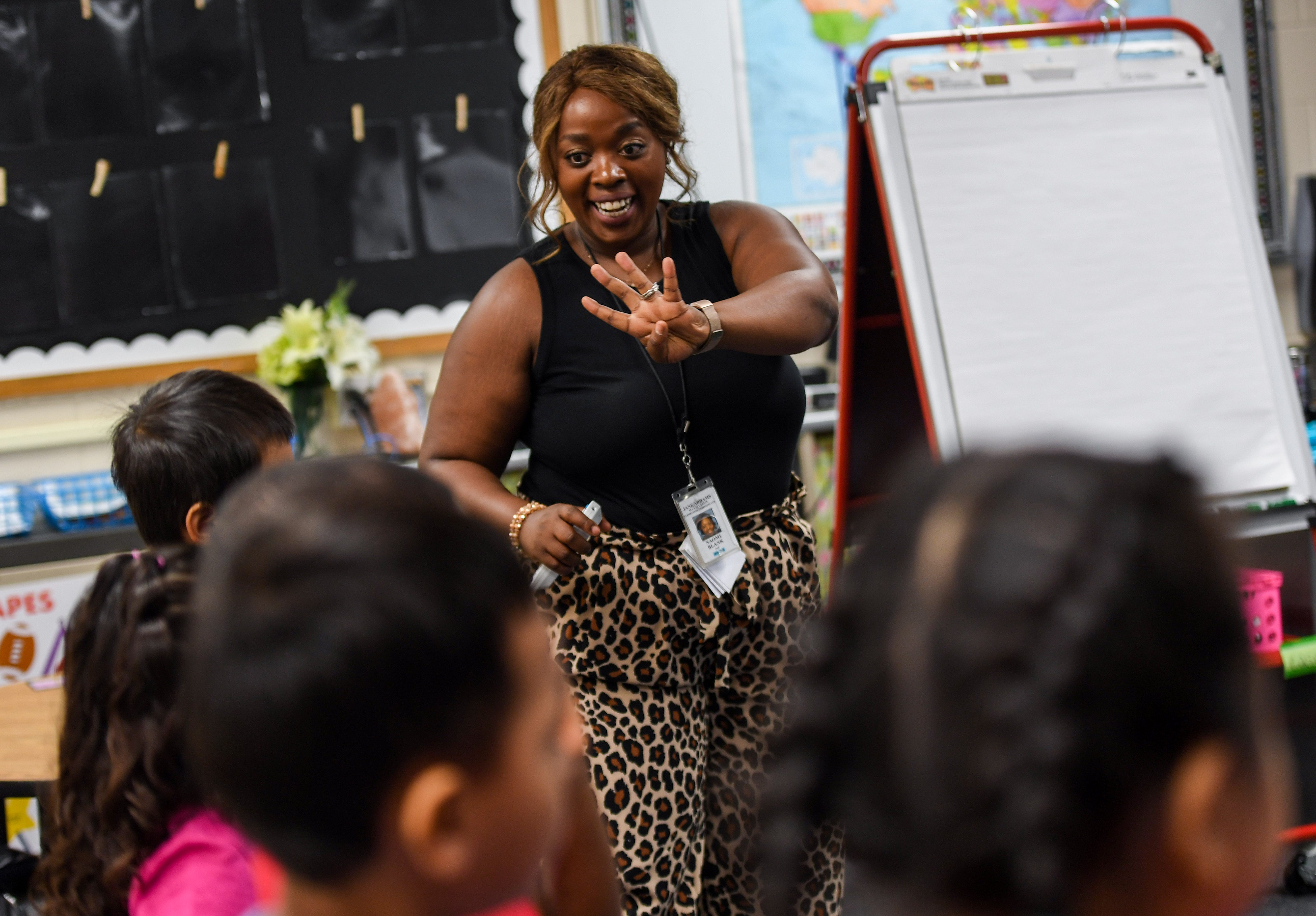
The pin demonstrates the importance of assessing and surveying students – virtually their academic performance, their technical needs, or fifty-fifty for their thoughts on how to improve remote pedagogy, said Angela Jerabek, the executive managing director of BARR Center, a school improvement nonprofit working with John Harris High School.
"We should exist surging resources to the areas with the greatest need," Jerabek said. "But if we can't come across the problem, we can't solve the problem."
Source: https://www.usatoday.com/in-depth/news/education/2020/12/13/covid-online-school-tutoring-plan/6334907002/
Enregistrer un commentaire for "Attainment Explore American History Curriculum World Trouble Again"